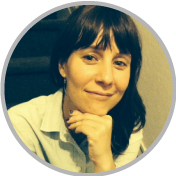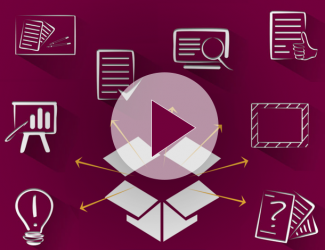On Thursday, 19 May 2016, the Resourcing Women’s Rights team at AWID facilitated a webinar focused on the role data plays in influencing funding and resource availability for women’s rights organizing.
Close to 80 women’s rights and feminist activists participated in the discussion covering innovative data tools and methodologies, as well as notable trends that data has revealed about funding for women’s rights. In addition to tools, our expert panelists also offered strategies to shape funding trends and to respond to challenges, particularly emphasizing the power of collective action. The conversation carried over to Twitter using the hashtag #FundEquality.
The Data, Resources and Women’s Rights webinar adds to our planned engagements on the way to the AWID Forum in September, building up activities and conversations that will continue at the Feminist Resource Mobilization (FRM) Hub at the Forum. Please keep an eye out for continued activities related to feminist resource mobilization between now and September!
Full audio of the webinar:
Presentations and Highlights from the webinar panelists:

Emily Esplen, Organization for Economic Cooperation and Development (OECD)
Emily leads the OECD Development Co-operation Directorate’s work on gender equality including managing GENDERNET, which has been publishing data for over 20 years on aid supporting women’s rights. Bilateral and multilateral assistance is one of the traditional and largest sources of funding for women’s rights organizations and gender-marked data has revealed funding patterns of OECD members. Emily shared preliminary on the latest data which will be finalized and published in the coming months:
- Gender-focused bilateral aid from OECD countries is at an all-time high and a steady and healthy 28% of gender-focused aid is channeled to to civil society organizations that work on gender equality.
- Despite these positive trends, aid specifically directed to women’s rights organizations is incredibly tiny and decreasing. In 2011, only 1.2% of gender-focused aid was given to women’s rights organizations, and that has decreased to 0.5% in 2014.
- Issues with localization: although a healthy 28% is being directed to civil society organizations, only 8% of those organizations are based in developing countries.
- Collective advocacy can influence bilateral funders such as by demanding better tracking systems and clear tracking of how much money is going to global Southern based organizations.

PeiYao Chen, Global Fund for Women (GFW)
PeiYao, Director of Learning, Evaluation and Impact at GFW went over data gleaned from over 3,000 organizations located all over the world. The preliminary analysis of this data revealed important information on funding trends for women’s rights including:
- Grant sizes from donors are increasing as is restricted funding (funding given for a specific project or purpose - not flexible).
- However, women’s rights organizations cannot meet all the donor criteria and these funds are thus inaccessible to them.
- Global Fund for Women provides flexible grants for transformative women’s rights work. Each year, Global Fund for Women receives over 2,500 proposals but only has enough funding to support 20% of the proposals showing that there is a high demand and need for the type of funding Global Fund for Women provides.

Alexandra Pittman, Impact Mapper
Alexandra, creator of the Impact Mapper, explained how the Impact Mapper is a newly developed online tool that bridges the needs of donors and social justice organizations by tracking, aggregating and visualizing social change data and stories.
- The creation of Impact Mapper was driven by the aim of filling in key gaps in the women’s rights space, and more broadly in the social justice space. These gaps include: the sheer amount of stories that hold rich qualitative data on social change that is unanalyzed; long-term transformative social change data is typically not in quantitative form and can be difficult to communicate to donors; and both organizations and donors need monitoring and evaluation tools to be strategic and learn what is working and not working.
- Impact Mapper aims to bridge the monitoring and communication functions in an organization so the organization can effectively track and communicate evidence-based trends to their community, to relevant stakeholders and to donors.
From AWID, Kamardip Singh and Nerea Craviotto covered two tools developed by the Resourcing Women’s Rights team to influence and shape funding availability.

Kamardip, who focuses on building tools to support women’s rights organizations and movements, walked through the recently launched WITM Toolkit, a how-to-guide on adapting AWID’s research methodology on funding trends. The WITM Toolkit allows anyone to adapt the guide for specialized research which is an effective advocacy tool to direct higher quantity and quality funding towards women’s rights. For example, the Toolkit was highlighted as a potential tool to reveal funding trends related to sexual and reproductive health and rights, but can also be adapted to as a research and advocacy tool for not only issues, but also populations (for example, disabled women) or geographies (for example, Central Asia).

Nerea, lead advocacy coordinator for the Resourcing Women’s Right’s team, explained the development and importance of the FundHer Scorecard. The FundHer Scorecard is a framework that aims at assessing the quality and quantity of funders’ giving towards gender equality and women’s rights. With the results of the FundHer Scorecard, funders can evaluate their funding strategies towards supporting gender equality and women’s rights, including women’s rights organizing. Also, based on #FundHer Scorecard results feminist and women’s rights organization can build a dialogue with the funding community that could lead to a shift in the funding policies and practices that better contribute to advance, respect, protect and fulfill women’s rights and promote gender justice.
Follow the #FundEquality conversation on Twitter
